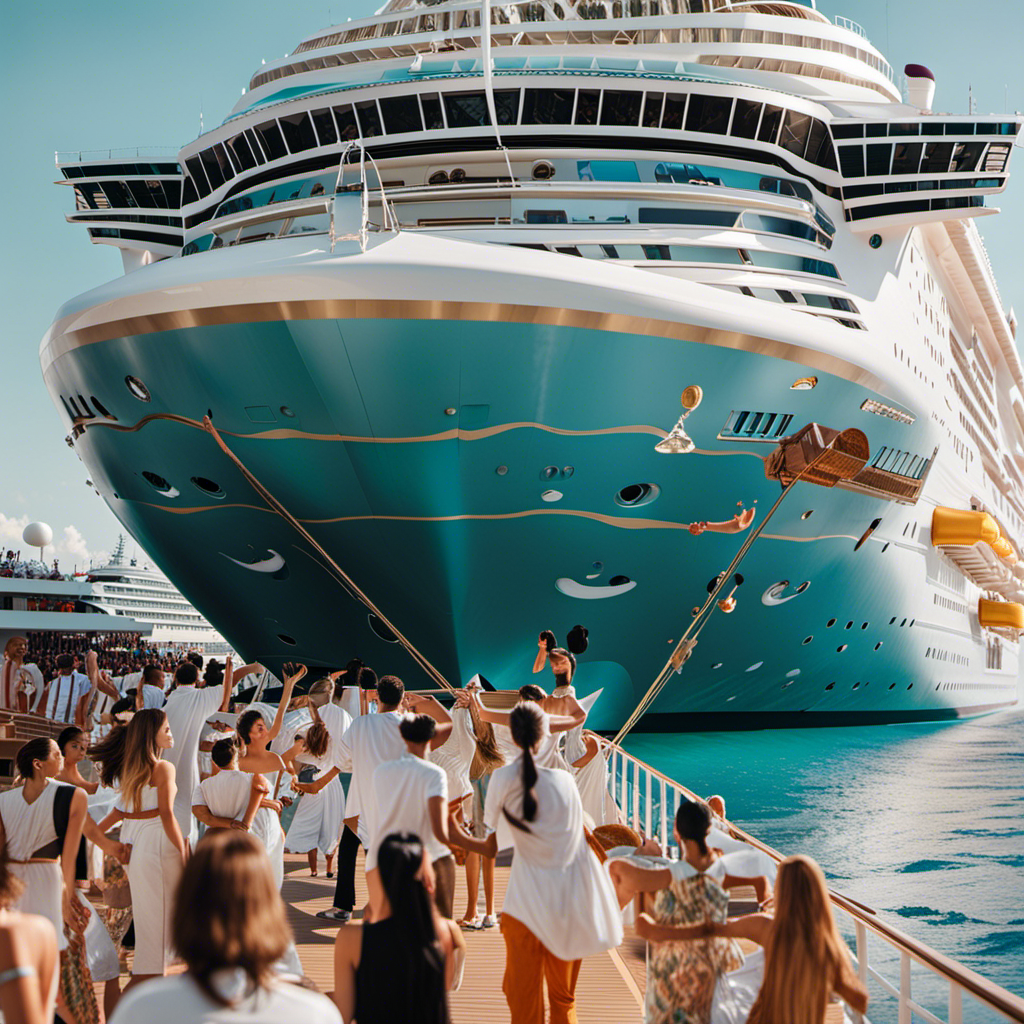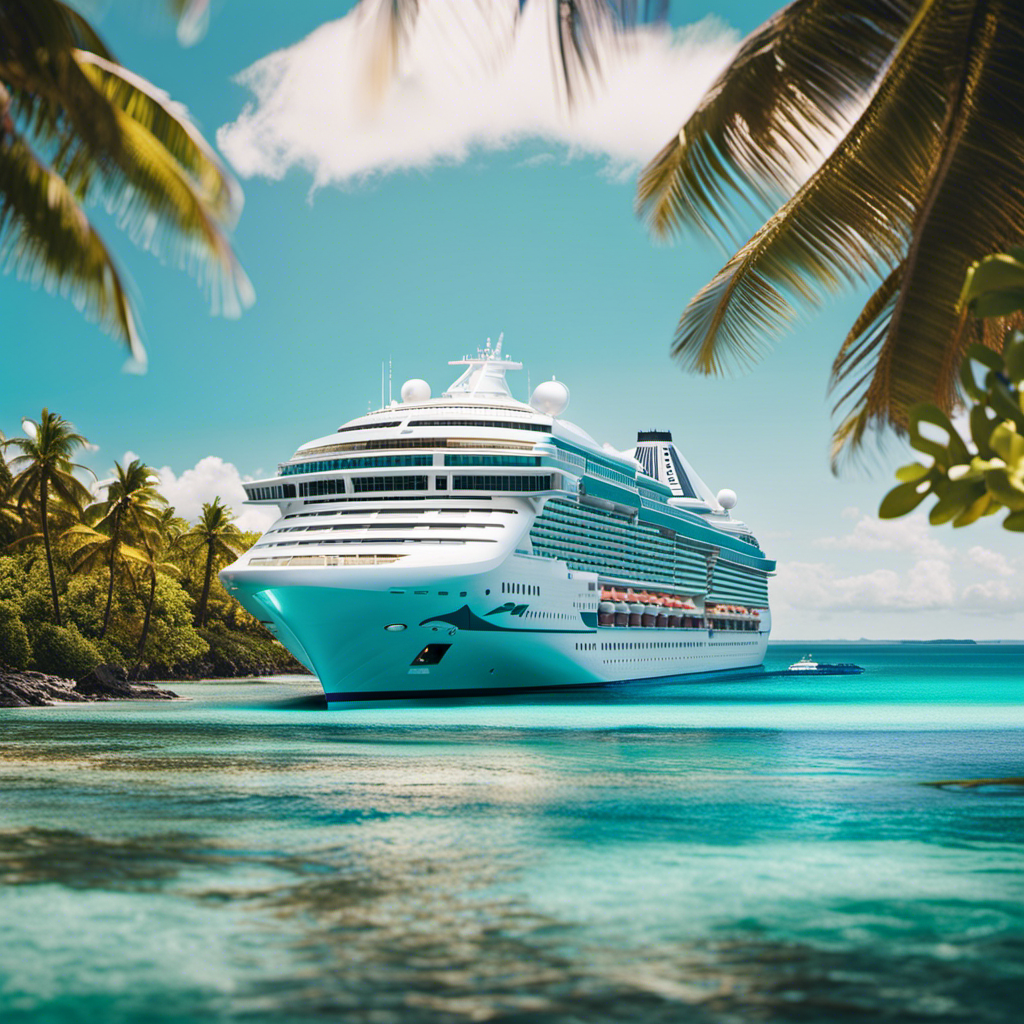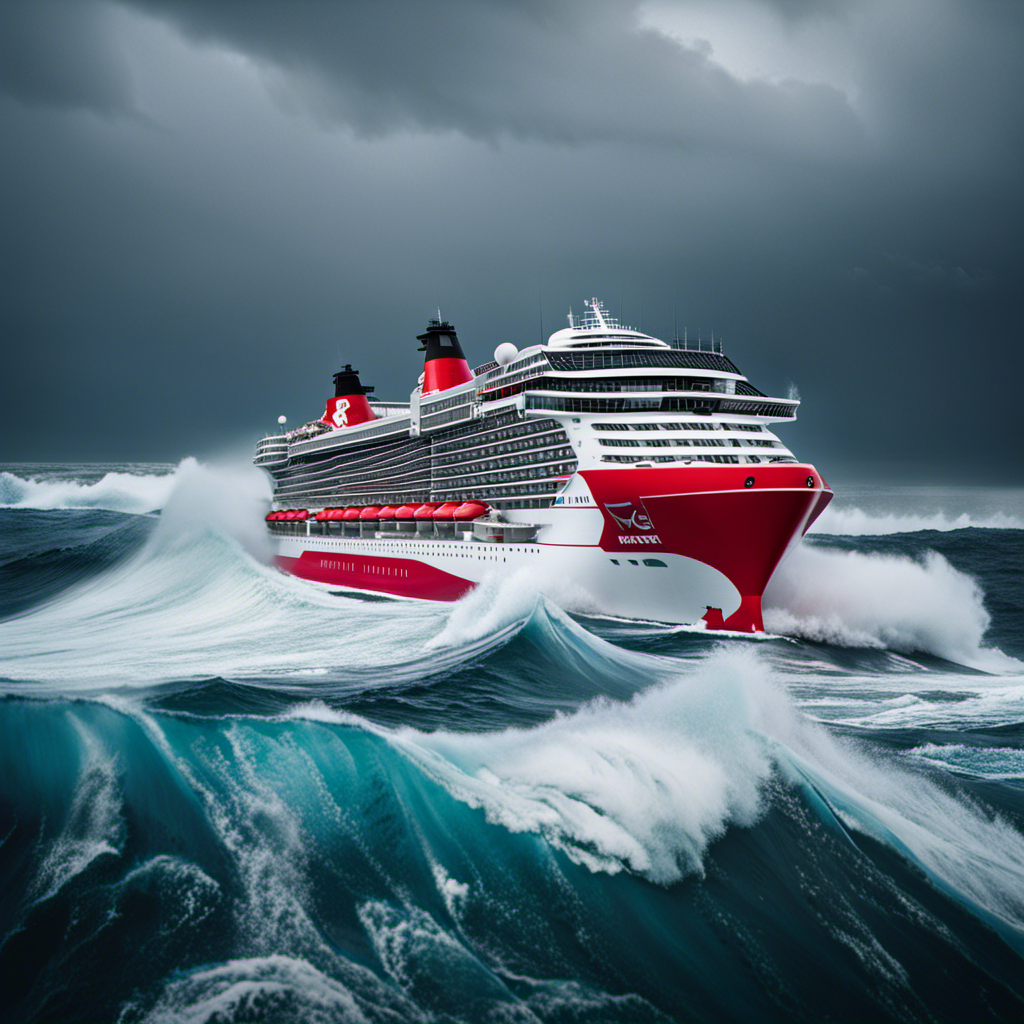As a fervent admirer of cruise ships, I’ve been closely tracking the progress in the fight against COVID-19 on these magnificent vessels. It brings me great joy to announce that there’s been a significant decrease in case numbers, coupled with a rise in vessels obtaining a green status, indicating they are free of cases.
Despite the challenges posed by the Delta variant, new protocols have effectively limited the spread of the virus. Cases found on ships are promptly isolated, and cruise lines have bolstered their protocols to prioritize passenger health.
The CDC’s color-coded status system and daily reports ensure transparency and accountability. The cruise industry’s track record in combating the virus is undeniable, and as cases continue to decline, they can confidently implement protective measures to ensure a safe cruising experience for all.
Key Takeaways
- Decrease in COVID cases on cruise ships from August to September
- Rise in green status ships indicating zero cases
- Protocols effectively prevent the spread of the virus
- Increase in bookings and boost for the industry
Decrease in COVID Cases on Cruise Ships
I’ve noticed a significant decrease in COVID cases on cruise ships, with a rise in green ships and a decline in non-green ships from August to September.
This improvement can be attributed to the implementation of stricter cruise ship protocols and the long-term effects it has on the cruise industry.
Cruise lines have stepped up their game by limiting the spread of cases through new protocols, isolating any cases found on ships, and submitting daily reports to the CDC.
The color-coded status for cruise ships, with green indicating zero cases, has been helpful in tracking the progress.
This data shows that there has been a rise in green ships throughout September, indicating a positive trend.
The decline in non-green ships from August to September further supports the effectiveness of these protocols.
This decrease in COVID cases on cruise ships is crucial for the industry’s recovery and for ensuring the safety of passengers and crew members.
Green Status: a Positive Sign for Cruise Ship Health
Seeing the increase in green status among tracked ships is a positive indication of improved health conditions. It shows that the protocols implemented by cruise lines are having a significant impact in keeping passengers healthy. The effectiveness of these protocols can be seen in two main ways:
-
Decrease in COVID cases: The green status indicates zero cases on the ship, which means that the protocols are effectively preventing the spread of the virus. This is crucial in maintaining a safe environment for passengers and crew members.
-
Restoration of passenger confidence: When ships have a green status, it reassures passengers that the cruise industry is taking the necessary measures to prioritize their health and safety. This can lead to an increase in bookings and a boost for the industry as a whole.
Overall, the green status has a positive impact on cruise ship health by reducing the risk of COVID transmission and restoring passenger trust in the industry’s protocols.
Cruise Ship Protocols: Limiting the Spread of COVID
Implementing effective protocols has been crucial in limiting the spread of COVID on cruise ships. Cruise ship testing requirements and vaccination policies have played a significant role in keeping passengers and crew members safe.
Cruise lines have implemented rigorous testing requirements for all individuals boarding the ship, ensuring that only those who test negative for COVID are allowed on board. Additionally, vaccination policies have been put in place, requiring all passengers and crew members to be fully vaccinated before embarking on the cruise.
These protocols have proven to be effective in preventing the spread of the virus on board. By implementing these measures, cruise ships have been able to create a safer environment for everyone on board and minimize the risk of outbreaks.
Tracking and Reporting: Cdc’s Role in Monitoring Cruise Ships
The CDC plays a crucial role in monitoring and tracking the status of cruise ships through their color-coded system. This system allows the CDC to assess the COVID-19 situation on each ship and implement necessary measures to ensure the safety of passengers and crew.
Here are some key points about the CDC’s role in cruise ship monitoring:
-
Daily reports: Cruise lines submit daily reports to the CDC, providing information on the number of COVID-19 cases onboard and the ship’s color status.
-
Color-coded status: The CDC uses a color-coded system to categorize ships. Green status indicates zero cases, orange and yellow status are based on case percentages, and red status indicates sustained transmission or potential overwhelm.
-
Data-driven decisions: The CDC analyzes the data from these reports to make informed decisions about the protocols and interventions needed to mitigate the spread of COVID-19 on cruise ships.
Through their monitoring efforts, the CDC plays a vital role in ensuring the safety and well-being of passengers and crew members on cruise ships.
Positive Trends: Improvement in Cruise Ship Health Over Time
I’ve noticed a significant improvement in the health of passengers on cruise ships over the past month. Cruise ship safety measures have played a crucial role in combating the impact of the Delta variant.
Currently, 75% of tracked ships have a green status, indicating zero cases onboard. This positive trend can be attributed to the new protocols that limit the spread of cases and ensure that any cases found on ships are isolated. The cruise industry has implemented color-coded status for ships, with daily reports submitted to the CDC.
Green status indicates no cases, while orange and yellow statuses are based on case percentages. Red status indicates sustained transmission or potential overwhelm. The decline in non-green ships and the rise in green ships since August demonstrate the effectiveness of the protocols implemented by cruise lines in mid-August.
Case numbers on ships are relatively contained, with the largest number of cases reported on a Carnival ship. Royal Caribbean reported fewer than 150 cases among over 500,000 passengers. As cases decline, the risks associated with cruising are falling. This is due to protocols such as testing, masks, and vaccinations.
The cruise industry has shown its ability to implement protective measures and the data supports its track record during this period.
Case Numbers on Cruise Ships: What the Data Reveals
Since the data supports it, it is clear that the protocols implemented by the cruise industry have effectively contained the number of cases on board. COVID case trends have shown signs of improvement, indicating the impact on the cruise industry.
With 75% of tracked ships having green status, it is evident that the new protocols have limited the spread of cases. Any cases found on ships are promptly isolated, further preventing transmission. The CDC’s color-coded status for cruise ships provides a clear indication of the situation on board. Daily reports submitted to the CDC help track the status, with green indicating zero cases and red suggesting sustained transmission or potential overwhelm.
The past month has seen a significant improvement, with more green ships and a decrease in non-green ships. The cruise lines have stepped up their protocols since mid-August, coinciding with a decline in cases on land. While case numbers on cruise ships are not officially released, cruise lines report any cases to the CDC. The largest number of cases reported was on a Carnival ship, while Royal Caribbean reported fewer than 150 cases among over 500,000 passengers.
As cases decline, the risks onboard are falling. Protocols such as testing, masks, and vaccinations have been implemented, leading to low case numbers on cruise ships. The data supports the cruise industry’s track record during this period, highlighting their commitment to passenger safety.
The Future of Cruising: Falling Risks as COVID Cases Decline
As we continue to analyze the data surrounding COVID cases on cruise ships, it’s clear that the industry is making significant progress in battling the virus. The future of cruising looks promising as risks continue to fall with declining case numbers. Cruise ship recovery is on the horizon, and post-pandemic cruising seems more attainable than ever before.
One of the key factors contributing to the falling risks is the implementation of strict protocols such as testing, mask-wearing, and vaccination requirements. These measures have proven effective in limiting the spread of cases on board. Additionally, the cruise industry is closely monitored by the CDC, which reports the official color status of each ship. This transparency allows passengers to make informed decisions about their travel plans.
To provide a visual representation of the progress being made, here is a table showcasing the daily color status of tracked ships throughout August and September:
| Date | Green | Orange | Yellow | Red |
|---|---|---|---|---|
| August 1 | 45 | 12 | 8 | 2 |
| August 15 | 58 | 6 | 5 | 0 |
| September 1 | 70 | 2 | 1 | 0 |
| September 15 | 85 | 0 | 0 | 0 |
| September 30 | 92 | 0 | 0 | 0 |
As you can see, there has been a steady increase in the number of green status ships throughout September, indicating zero cases on board. This positive trend is a testament to the cruise lines’ commitment to implementing and enforcing stringent health and safety measures.
With each passing day, the cruise ship industry is moving closer to a full recovery from the COVID-19 pandemic. As case numbers continue to decline and protocols remain in place, post-pandemic cruising is becoming a reality. Passengers can have confidence in the industry’s track record during this period and look forward to enjoying the pleasures of cruising once again.
Frequently Asked Questions
How Many Cases of COVID-19 Have Been Reported on Cruise Ships Since the Start of the Pandemic?
I don’t have the exact number, but there have been reported cases of COVID-19 on cruise ships since the start of the pandemic. Cruise ship outbreaks have led to the implementation of quarantine measures.
Are There Any Specific Cruise Lines That Have Had a Particularly High Number of COVID-19 Cases?
Yes, there have been cruise lines with high numbers of COVID-19 cases. Legal actions have been taken against some cruise lines due to outbreaks. However, the industry has made strides in battling COVID-19 with improved protocols.
How Often Are Cruise Ships Required to Report Their Color Status to the Cdc?
Cruise ship reporting frequency to the CDC depends on regulations. The frequency of reporting color status is not specified. However, it is essential for cruise ships to adhere to CDC guidelines and report any COVID-19 cases promptly.
What Specific Protocols Have Cruise Lines Implemented to Limit the Spread of COVID-19 on Board?
Cruise lines have implemented various protocols to limit the spread of COVID-19 on board. These include enhanced cruise ship sanitation measures, improved ventilation systems, mandatory testing, mask requirements, and vaccination mandates for passengers and crew.
What Is the Outlook for the Future of Cruising as COVID-19 Cases Continue to Decline?
The future of cruising looks promising as COVID-19 cases continue to decline. This is great news for the cruise industry and tourism in general. The impact on tourism can be positive with the implementation of effective protocols.
Claire, a creative soul with an unquenchable thirst for storytelling, is an integral part of the Voyager Info team. As a dedicated writer, she weaves captivating narratives that transport readers to enchanting cruise destinations and beyond.
Claire’s love affair with writing began at an early age when she discovered the magic of words and their ability to craft worlds and emotions. Her innate curiosity led her to explore various literary genres, but it was travel writing that truly captured her heart. Drawing inspiration from her own globetrotting adventures and encounters with diverse cultures, Claire embarked on a journey to become a travel writer par excellence.










